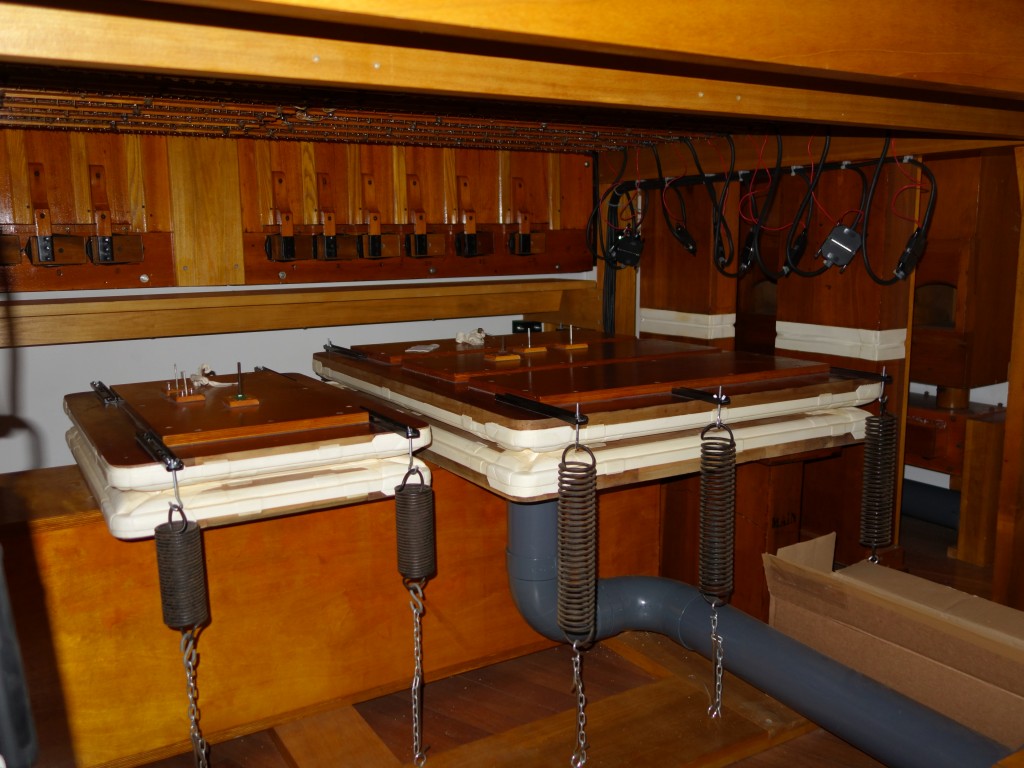The devices that provide wind at a constant pressure irrespective of the volume demand.
The essential elements are a reservoir with a rising top (hence the name ‘bellows’ frequently applied) from which the pipework is fed, a valve system controlling the input of wind from the blower into the reservoir, and a spring system acting on the rising top which balances the internal air pressure force on the rising top.

This explains (in brief) how the regulating system works:
• Air from the blower (“static wind”) is fed via the valve system into the reservoir.
• The rise in pressure causes the top to rise, increasing the tension in the springs.
• The rising top is linked to the valve system and as the top rises the valve system progressively restricts the static wind reaching the reservoir.
• The height at which the regulator top stops rising determines spring tension and thus the output pressure from the regulator reservoir.
In practice, the system operates dynamically, balancing pressure and flow (since air is compressible) and reacting according to the flow demand, which varies according to the number of pipes being played.
A secondary function (very important for theatre organs) is the interaction of the regulator with the tremulant. The tremulant effect depends not only on the tremulant itself but also on the resonances in the wind supply system; the regulator plays a significant part in this and adjustment of the valves and springs can have a critical effect, as well as the actual design of the regulator. The tremulant characteristic may need to be modified by the addition of weights to the rising top, although as this can negatively affect the precision of the regulating action it has to be done with care.
